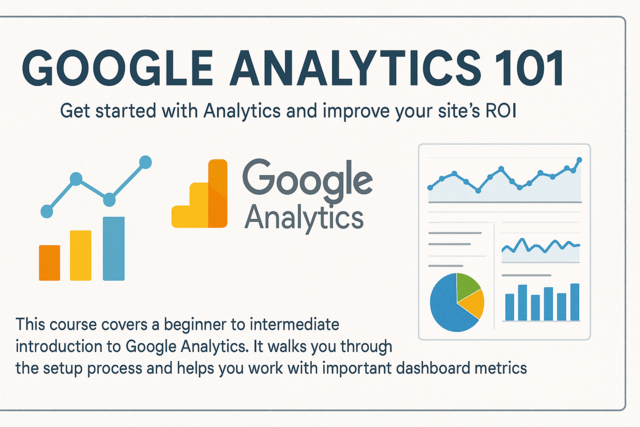No matter what you do on a computer, you use computer files. Whether you use files to store documents and images, or you use a software program that operates using information stored in files, files are critical to you being able to do anything on a computer.
File Explorer is where you can find all your files in Windows 8. You will use File Explorer to find files you've saved to your computer or a connected device, create new folders or move/copy files, delete files you don't need, back up files, and create compressed versions of files.
File Explorer existed in Windows 7 as Windows Explorer, but it's been upgraded in Windows 8 to include a ribbon. If you use MS Office, then you are already familiar with a ribbon.
Let's take a look at the ribbon and become familiar with the tasks you can complete using it.
There are four tabs on the ribbon: File, Home, Share, and View.
If you click the File tab, you'll see this:
You use the File tab to open a new File Explorer window, display files and folders for frequently visited places, delete your browsing history, or close File Explorer.
The Home tab is shown below. You can use the Home tab to copy/paste items, organize, delete items, create new libraries or folders, and open/select files and folders.
The Share tab is pictured below:
You use the Share tab to share files and send them to others - or to share with other uses on your computer.
The View tab is shown below.
Using the View tab, you can adjust how you view the contents of your drive and the folders on it. You can sort the information in different ways too, such as name, size, or date created.
Files-and folders that contain files - are organized into libraries. There are libraries already created for you, such as Documents, Pictures, Videos, and Music. You can also create your own.
To move between folders and libraries, open File Explorer, then double click a library to open it. We've included a picture of File Explorer below, with the libraries circled in red.
To create a new library, click the Home tab, then click New Item> Library.
A new library appears:
Click in the text field to name your new library.
Double click on a library in File Explorer to open it.
Below, we've opened the Documents library.
Now, click a folder in the library.
Use the Up arrow to the left of the address bar to go up on level in the folder. Use the back arrow to go back to the last level you viewed: .
Click the dropdown arrow to the right of the forward button to look at items you've recently viewed in File Explorer.
To search for files and folders in File Explorer, click on the search field, circled below in red.
Now enter the name of the file. You'll see matching file names as you type.
Double click in the file you want to open.
You can also share content with other users and other people in your network right from File Explorer.
To do this, click on the Share tab in File Explorer.
Now, go to the Share With List group on the ribbon, then click Specific People.
Type a name to share with or use the dropdown arrow to find the person you want to share with.
Next, set their permission level. You can choose Read or Read Write. If you choose read, they'll only be able to read what you share with them. If you choose Read/Write, they'll be able to edit and change what you share with them.
When you're finished, click Share.
To create a new folder in File Explorer, double click the library or folder where you want to create a new folder. Remember, you can create folders within folders.
Next, click the Home tab.
Click New Folder .
Enter a name for the new folder in the text field below the folder, then press Enter.
If you want to rename an existing folder in File Explorer, click on the folder to select it.
Click on the Home tab, then the Rename button .
Type in the new name in the text field below the folder, then click Enter.
If you want to delete a file or folder, select the file or folder you want to delete in File Explorer.
Go to the Home tab.
Click the dropdown arrow below the Delete button .
Windows 8 will ask you to confirm that you want to delete the file:
When folders start to get big and have several files in them - or just a large file, they take up more space on your computer. The same goes with files. In addition, large files and folders can take forever to send via email. To save space and make emailing these files and folders as attachments go quicker, you can compress - or zip - files and folders.
To understand what a compressed file is, think of a stack of crinkled up paper on your desk. Because the paper is crinkled, the stack is higher than it normally would be. If you use your hand and press down the stack, then sit a paperweight on it, it makes the stack shorter. That's essentially what you're doing to files and folders when you compress them.
To compress files and folders, locate the file or folder that you want to compress.
Select the file or folder.
Next, right click on the file or folder and then click New>Compressed (zipped) Folder.
A folder icon with a zipper on it. (See below) This is your compressed folder. You still have the original file or folder.
Click in the text area below the icon to rename the file/folder.
To extract files or folders from a compressed folder, click the file, then click the Extract tab that appears in the ribbon:
Click the Extract All button.
You can back up copies of your files and folders to an external device, such as a USB stick or an external hard drive. This is a good idea because it protects your data even if your computer crashes.
To back up your files, first connect your external device that you want to use to save the backup.
Go to the desktop, then press the Windows key + X.
Select the Control Panel.
Go to the System and Security section (if you don't see this, start to type backup in the search bar, then click on File History).
Click the Turn on Button.
To burn content to a CD, put a burnable, writable disk in your CD/DVD drive.
Open File Explorer.
Select the content that you want to burn to disc. To burn more than one file or folder, hold the CTRL key down while you select them.
Now, click the Share tab, then click the Burn to Disc button.
Next, select how you want to use the disc in the dialogue box that appears:
- You can use it as a USB/ Flash drive. This will allow you to save, edit, and delete files on the disc.
- Or you can use it as a CD/DVD, but files will not be able to be edited after burning.
Click Next when you're finished.
Windows then formats your disc and burns it.
-
Managing People and Time
Nowadays, people use their computers for more than just surfing the web. We use it to send and receive emails for both personal and business reasons, which means we keep in touch with a lot of people. We use computers to schedule appointments and meetings on computer-based calendars. In addition, we also rely on our computers and the Internet for our weather forecasts. It's safe to say that computers are playing a bigger and bigger role in our lives.For that reason, Windows 8 provides a lot more tools to make managing the things that are important to you when you use your computer. This includes improved contact management tools, a calendar app, and up-to-the-minute weather. Best yet, it's all easier than ever to access.
Adding ContactsBefore Windows 8, you managed your contacts through your address book that's included with whatever email program you use. Windows 8 has an app called People that helps you do this better than before. You can send your contacts messages, post a message to the contact's Facebook page, or send an email - all right through the app.
Let's take a look at the People app and learn how it's used.
To access the People app, go to the Start screen and click the People tile.
Next, right click to see the toolbar.
Click New Contact in the lower right corner.
Enter your contact's information.
Click Save when you're finished.
Edit Contact InformationThere will be times when you need to edit your contacts' information. Perhaps they move to a new address, get a new phone number, or change email addresses.
To edit contact information, click the People app on the Start screen.
Click on a contact name, then right click.
Click Edit.
Click a field to edit it.
Click Save.
Sending MessagesYou can also send message to people using the People app. You can use the Mail app to do this, our Outlook or another email program.
To send an email message to a contact, open the People app. Make sure All Contacts are displayed.
Click a contact.
Click Send Email.
The first time you use it to send a message, you'll see this window:
Choose your email program.
Enter your message and click Send.
Pictures and Music
In this section, we're going to talk about using the Picture library. We're also going to learn about the Music app, how to buy music, and how to use windows Media Player in Windows 8.Displaying Your Picture LibraryYou can also access your Picture library through the Photos app.
To do this, go to the Start screen, then click on the Photos app.
Move through the different libraries by using the scroll bar on the bottom of the screen.
Using the Photos app, you can see pictures from the Pictures library on your computer, as well as SkyDrive, Facebook, other devices you have connected, and so on.
Click on a library to open it.
Click on a photo in a library to enlarge it to full screen.
Use a Photo as an App TileThe good news is that you can replace the solid color app tile for the Photo app with a picture to give your Start screen a more customized look.
To do this, go to the Photos app. Locate the picture you want to use for a tile, then double click it.
Next, right click and choose Set As.
Choose to make the picture an app tile or the lock screen picture.
Create a Slide ShowIn a slide show, Windows displays one picture right after another. Creating a slide show using the Photo app is really easy.
On the Start screen, click the Photo app.
Open a library.
Now, right click, then click Slide Show.
Stop the slide show by clicking anywhere on the screen.
Buy or Rent VideosYou can also buy or rent videos on Windows 8 by using the Video app. It's required that you register a credit card and purchase Microsoft points to do this, however.
Click the Video app on the Start screen.
Find an item you want to buy or rent in the video store. When you choose a video, you will see both a buy and rent button.
Music and windows 8In Windows 8, you have two choices for playing music: the Music app or Windows Media Player. The Music app is great for looking and buying new music, as well as sorting music into categories. Windows Media Player, on the other hand, lets you create playlists and organize your music so you can hear the songs you want when you want to listen. We're going to talk about both the Music app and Windows Media Player in this section.
The Music AppThe Music app is completely new, and it has a different look than any other music players you've encountered on other computers or devices. Let's take a look.
Go to the Start screen and click the Music app.
You can use the scroll bar at the bottom of the screen to go to the right or left. If you go to the left, you'll see the music you have on your computer under the category My Music:
If you click a selection in the My Music section, it will play it for you.
Access tools by right clicking on the screen. Here you can click the Pause button to stop the music from playing.
Buying MusicTo buy music, go to the Music app, then click a category such as Xbox Music Store or Most Popular.
Go to the All Music list and click a genre.
Click and drag the scroll bar to find a selection that you like. Click outside of a selection to close it.
Here's an example of what happens when we click on a music selection:
To close the information on this album, we'd simply click in the grey area behind it.
If you want to buy it, click Buy Album, then follow the instructions that are provided. If you've ever bought anything online before, the checkout process will be easy for you.
Windows Media PlayerTo open Windows Media Player in Windows 8, go to the Start screen and start typing "Windows Media Player." When you see it in the Apps list, click on it.
To display your music, click Music at the top (circled in red below).
To play a selection, double click it.
Click the Next button to go to the next selection:
Click the Previous button to go to the previous selection: .
Click the Shuffle button to play songs randomly instead of in the order they are listed: .
Turn Repeat on to repeat a song. Click on it while the song is playing.
Use the slider to adjust the volume: .
Organize Music
You can sort your music by Title, Artist, Composer, or Length. To do this, you use the Organize button, circled in red below.
Click the Organize button, then click Sort By.
Select how you want to sort your music.
Create Playlists
When you create a playlist, you pick songs from your music library that you want to put together in a list. For example, you may have a playlist called Jazz that contains jazz songs from several different albums you have on your computer. Whenever you open the playlist, only those songs you put in it will play.
To create a playlist, click Playlists (circled in red below).
Click Create Playlist.
When you click Create Playlist, you'll see a new playlist created on the left:
Type in a name for the playlist and hit Enter.
Click on your new playlist.
Go to a selection you want to add to the playlist. Drag it to the playlist in the navigation pane.
Add all the selections that you want to your playlist.




























